Have you ever read that VPN providers advertise they have a kill switch? Have you wondered what that is? A kill switch is indeed some sort of emergency stop switch and it protects your privacy and strengthens your security.
A kill switch cuts your Internet connection if necessary
Let’s explain this simple: If the VPN software detects your connection to the VPN server is interrupted, the kill switch shuts of your internet connection.
That’s how it works. Basically the VPN software monitors the status of your connection. As long as you are connected to the Virtual Private Network, it’s all fine. The emergency stop switch has nothing to do.
You are using a VPN like NordVPN (big discounts NOW)* or Surfshark (unlimited connections)* to protect your privacy and to stay anonymous. If the connection to the VPN server drops, data may leak. That’s why the software cuts all connections to the Internet. Once the connection to the VPN is established again, the data flows as before.
Some pictures help
Have a look at the following picture. We are connected to the VPN and our data goes the blue route. ISPs, governments and other prying eyes can’t spy on us. They don’t see hat we are doing.
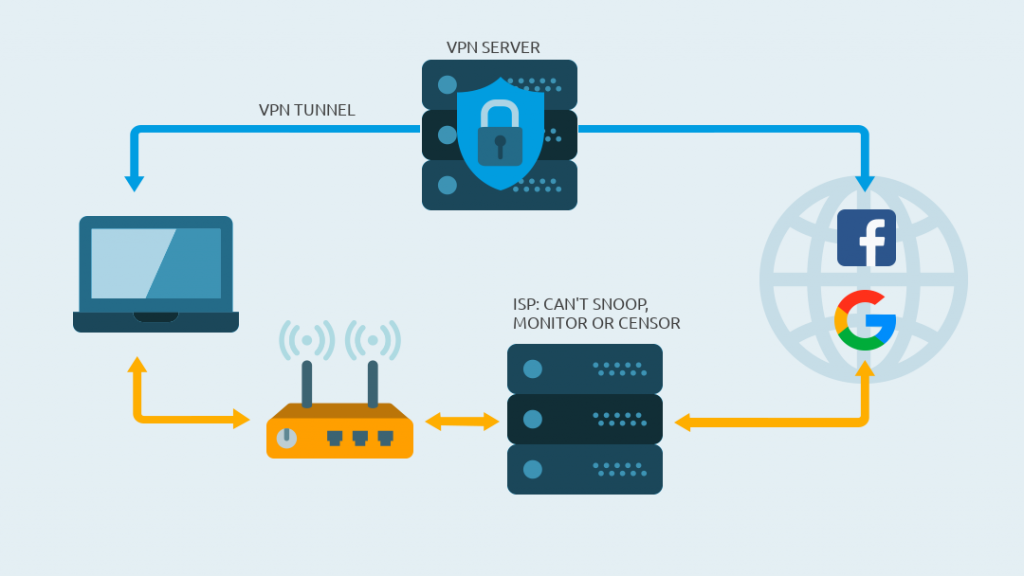
In the following picture the connection to the VPN server is interrupted. Maybe a server has a failure and so on. There are multiple reasons why a connection to the VPN is interrupted. With a good VPN it doesn’t happen normally but it can happen. Now our data would follow the yellow route. ISPs, governments and prying eyes can spy on us. Even if we switch off the internet connection manually and are quick — data is quicker and may have leaked already. Your privacy and anonymity are compromised.
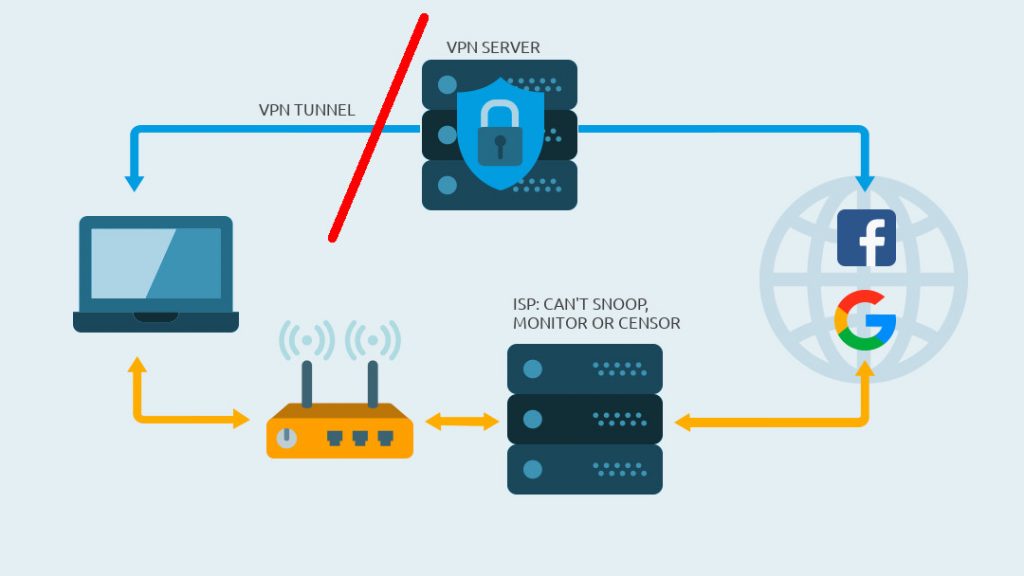
If we have a kill switch, it shuts down the connection immediately. We are cut off the Internet but also protected. No data can leak.
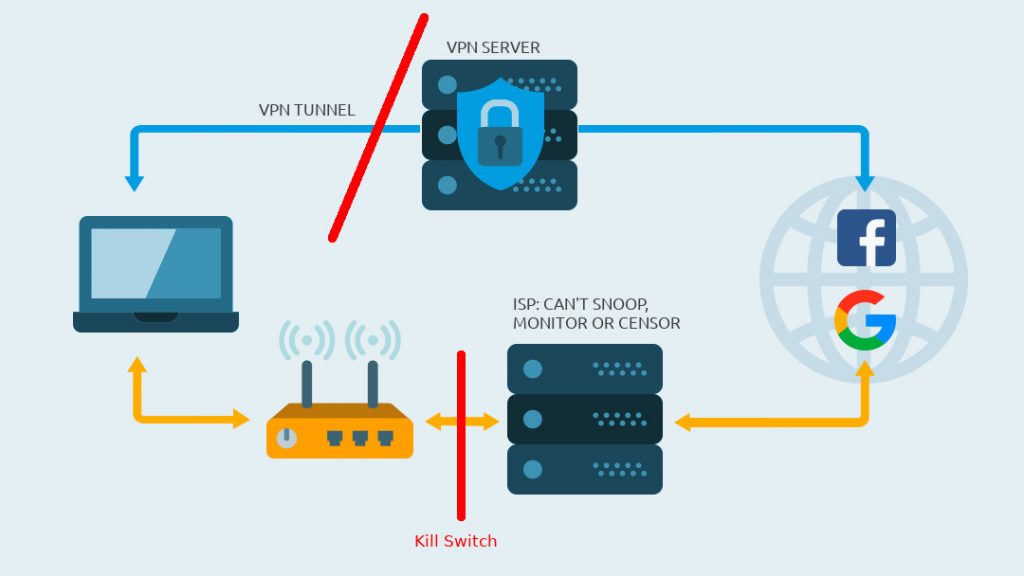
Meanwhile, the VPN software tries to establish the connection with the VPN server or any server of the provider. Once established the kill switch notices that and opens the connection again. You are protected and can surf on.
Such an interruption is sometimes only a few seconds. But that might be enough for sensitive data to end in the wrong hands.
What do you think now? Do you want a kill switch?
Of course, you want one! Normally, the feature is deactivated by default. If you want to use it check the settings of your VPN software and activate it.
NordVPN provides a kill switch in all apps. But you have to activate it first.
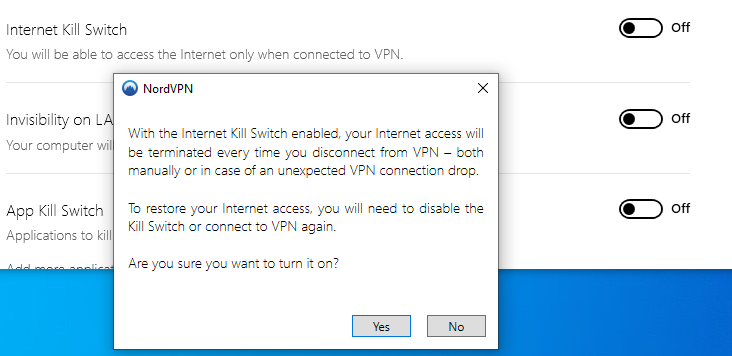
NordVPN — get it with big discount now!
The Linux client also provides this useful feature to protect your privacy. I use it on Linux Mint for example.

In the screenshot above you see another great feature that is active. CyberSec is a built-in ad blocker. It also blocks Malware, Tracker and stops phishing attempts. It’s a very handy feature you should consider using! CyberSec is available for all NordVPN apps.
Did you know that NordVPN already offers the VPN protocol WireGuard for Linux? It’s faster than OpenVPN — I did a speed test.
The Client of NordVPN also runs smooth on a Raspberry Pi. That’s why you can build your own VPN router in no time. Having your own VPN router is nice because you can connect devices to it that have no native client. A Chromecast is an example.
Surfshark also provides an emergency stop
Surfshark also provides a kill switch. By the way: Surfshark is the cheapest VPN you can trust IMHO. It costs less than $2 a month at the moment!
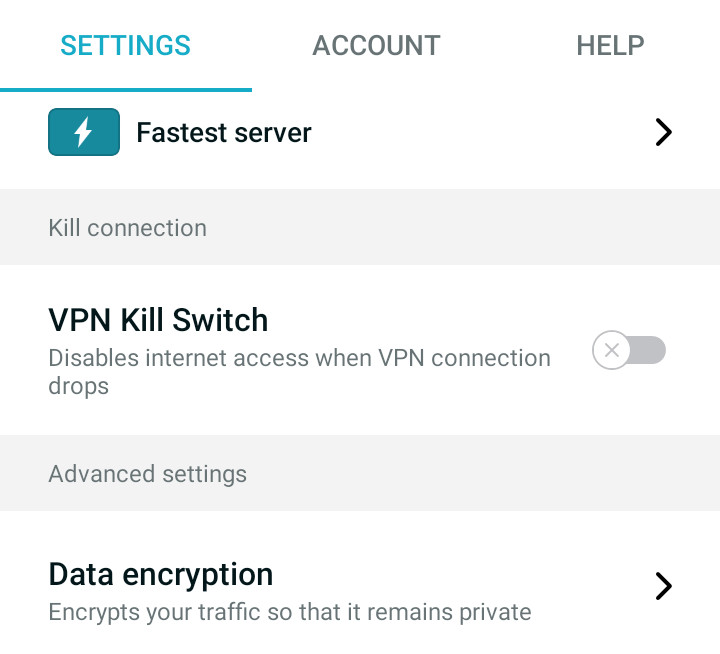
It’s also deactivated by default and you have to activate it. If you are using a public Wi-Fi or hotspot please don’t forget to activate it. The feature is made to protect your privacy and keep you anonymous. Please use the kill switch where it makes sense!